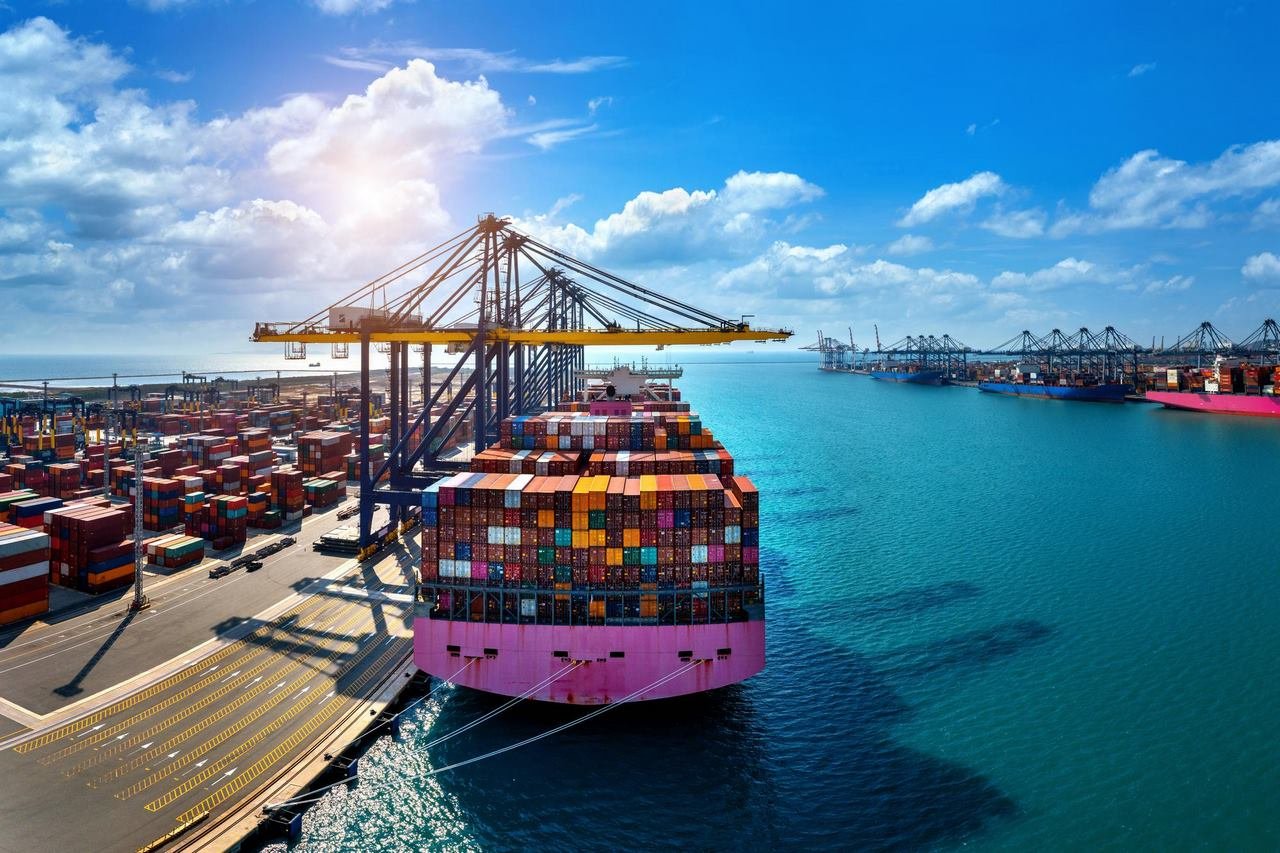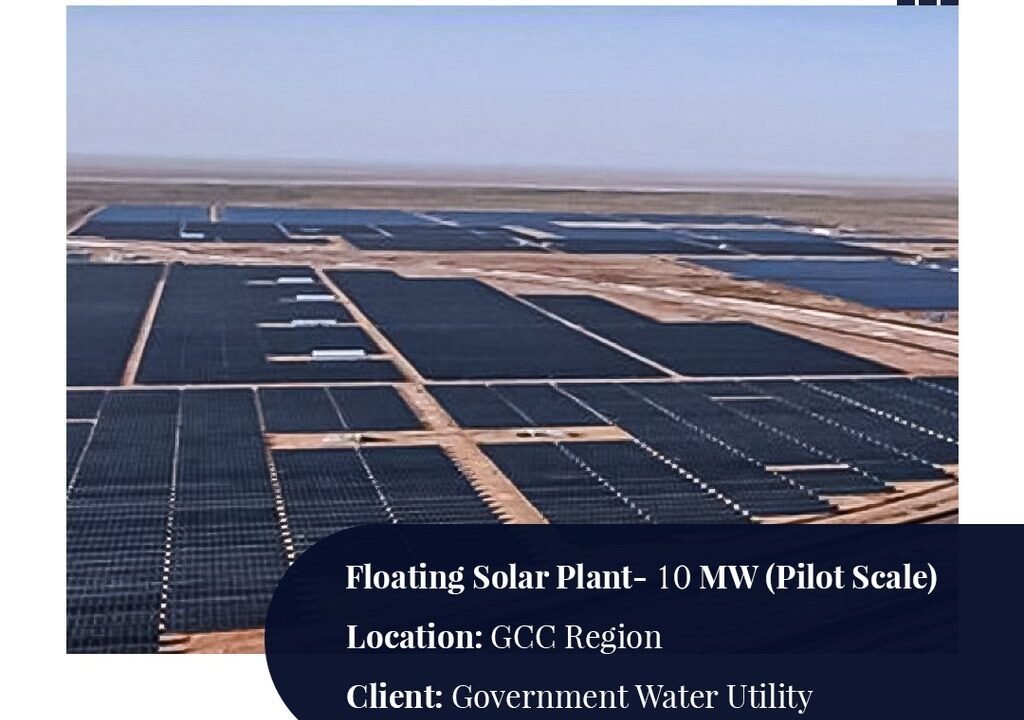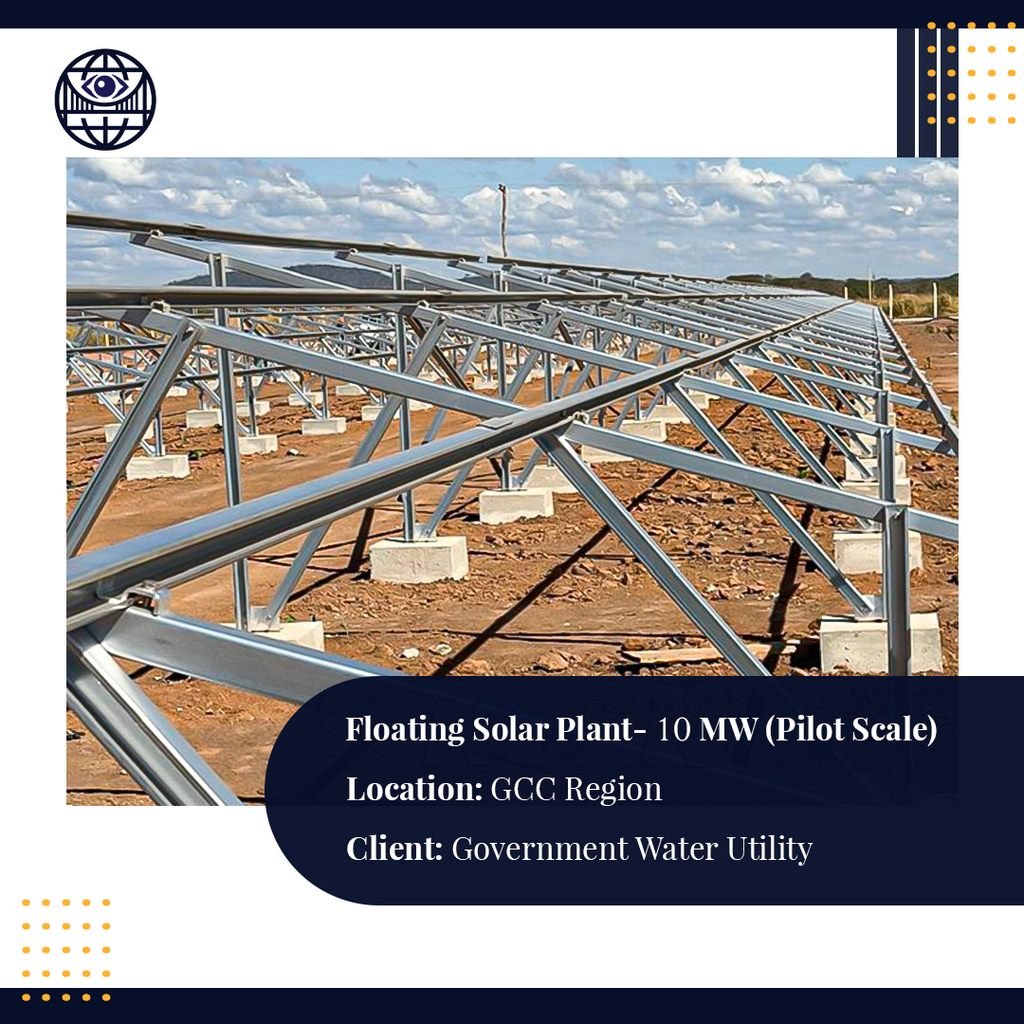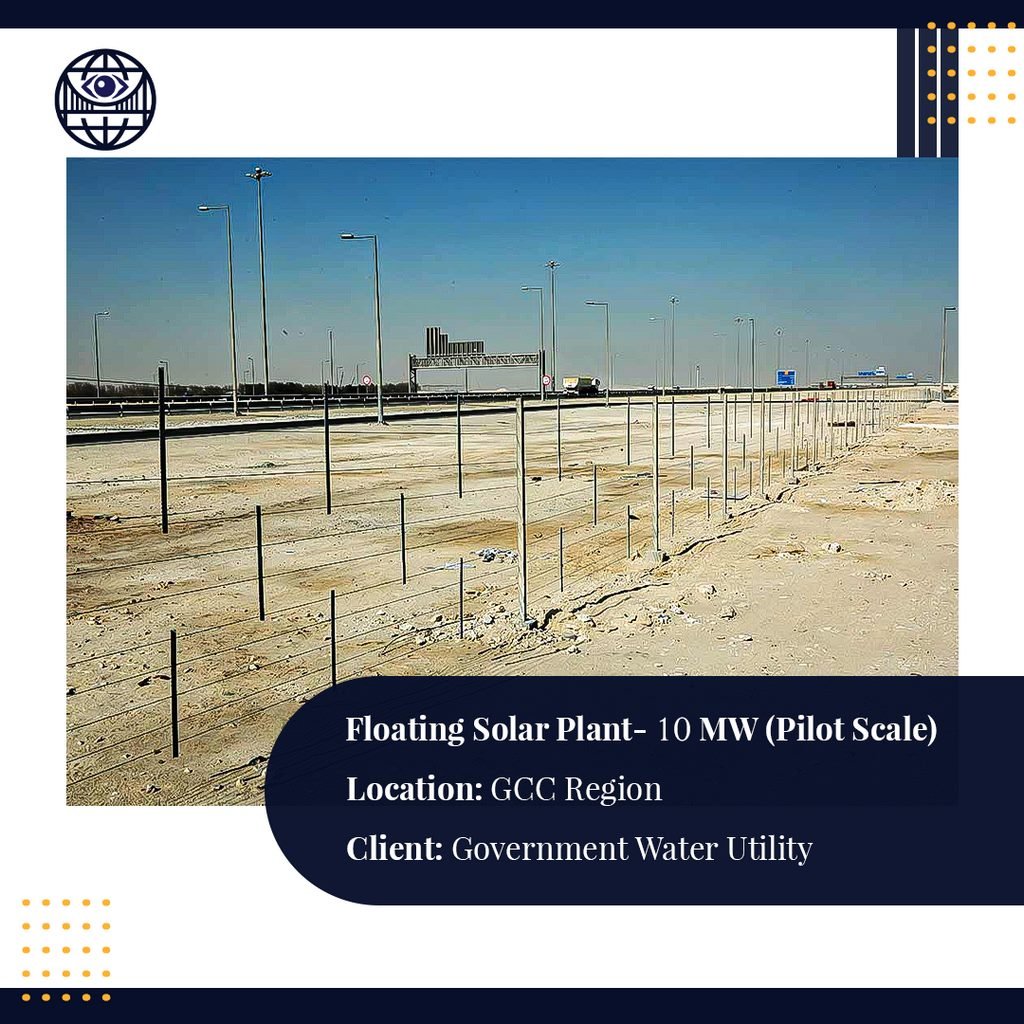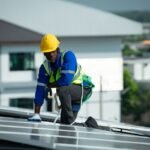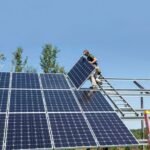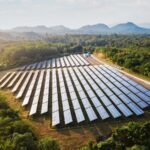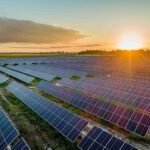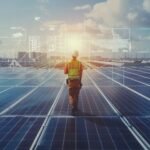Floating Solar Plant (10 MW Pilot Scale) Project Report
Project Overview
Steelbridge Export has successfully completed the development of a 10 MW floating solar plant located in the GCC Region, which serves as a pilot-scale initiative to assess the feasibility and performance of deploying Photovoltaic (PV) systems on water reservoirs. This innovative project demonstrates the potential of floating solar technology to address energy needs in regions with limited land availability, leveraging the vast surface area of water bodies.
Project Details
- Location: GCC Region
- Status: Feasibility and Pre-Engineering Completed
- Client: Government Water Utility
- Role: Technical Advisor and Project Developer
- Key Dates:
- Contract Signing: 3 March 2025
- Site Mobilization and Land Grading: 10 March 2025
- Mounting Structure Installation: 17 March 2025
- Solar Panel Installation: Completed as per schedule
- Testing and Commissioning: Commissioned
Scope and Objectives
This project aimed to explore the viability of floating PV installations on water bodies, focusing on the integration of solar power systems in locations where land-based solar farms would be impractical or inefficient. As a pilot project, it serves to test and validate several key components, including:
- Environmental assessments to ensure minimal impact on the aquatic ecosystem
- Load analysis to determine the optimal weight distribution of floating platforms
- Platform specifications for stability and longevity in aquatic environments
- PV panel layout optimization, ensuring maximum efficiency and performance under water-surface reflection
Technological Features
The project incorporated cutting-edge technologies to maximize energy efficiency and performance:
- Lightweight Mono-Glass Bifacial Modules:
- These advanced solar panels are specifically designed to capture sunlight from both the front and rear surfaces, enhancing overall energy output.
- Anti-Reflective Coatings:
- The panels were equipped with anti-reflective coatings, improving performance by reducing reflection losses and optimizing light absorption, particularly from water surface reflections.
- Floating Platform Design:
- A carefully engineered floating structure was developed to withstand environmental challenges such as water currents, wind, and waves, ensuring the stability and longevity of the panels in aquatic environments.
Environmental and Engineering Considerations
- Environmental Impact: Steelbridge Export conducted thorough environmental assessments to ensure that the project would have minimal impact on the waterbody’s ecosystem. This included analyzing potential effects on aquatic life and ensuring compliance with local environmental regulations.
- Load and Structural Analysis: A comprehensive load analysis was performed to ensure that the floating platform could support the weight of the solar panels while maintaining buoyancy and stability. Special attention was given to the materials used in platform construction to guarantee durability and resistance to corrosion in aquatic conditions.
Project Development Phases
- Feasibility and Pre-Engineering: In this initial phase, Steelbridge Export worked closely with the Government Water Utility to evaluate the project’s feasibility. Pre-engineering studies were conducted to assess site conditions, water characteristics, and the integration of floating PV systems.
- Site Mobilization and Grading: The site was prepared to accommodate the floating solar structure, which involved site grading and ensuring a proper foundation for the mounting systems.
- Mounting Structure and Solar Panel Installation: The mounting system was installed, followed by the arrangement of mono-glass bifacial modules on the floating platforms. The panels were optimally positioned to maximize sunlight exposure.
- Testing and Commissioning: Following the installation, the system underwent extensive testing to ensure all components were functioning optimally, leading to successful commissioning.
Performance and Results
The floating solar plant has been commissioned and is now fully operational. The project not only showcases the potential of floating solar as a viable alternative to land-based PV systems but also highlights its suitability for regions with limited land resources. The use of bifacial modules and anti-reflective coatings has proven to enhance energy yield, particularly in aquatic environments where sunlight reflection from the water surface further boosts panel performance.
Future Prospects
Given the success of this pilot project, Steelbridge Export is now poised to expand its portfolio of floating solar power plants across the region. This project offers valuable insights that could pave the way for larger-scale floating solar deployments, contributing significantly to the diversification and sustainability of energy sources in water-scarce regions.
This report summarizes the key milestones and outcomes of the 10 MW floating solar plant project, demonstrating Steelbridge Export’s expertise in EPCF (Engineering, Procurement, Construction, and Financing) and solar power plant Investment for renewable energy projects. The integration of innovative technologies, coupled with a thorough understanding of environmental and engineering.
For more information about Steelbridge export’s Other Projects click here.


